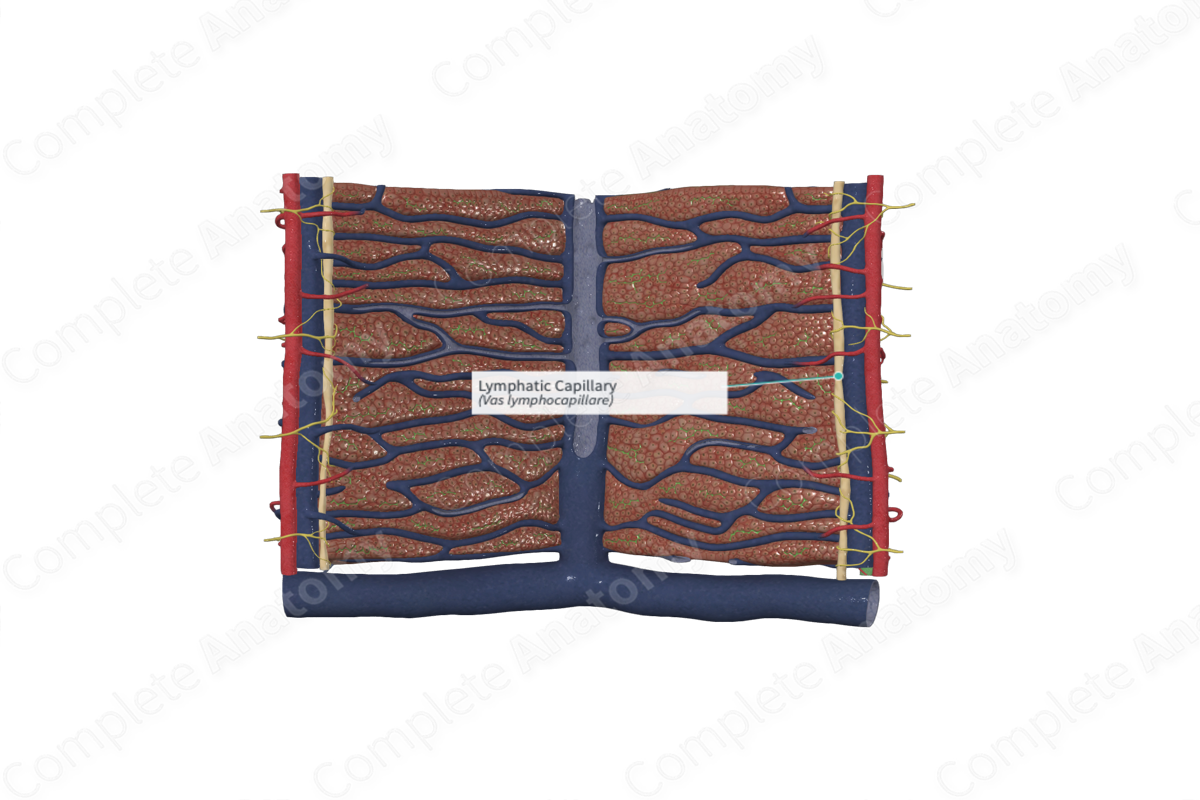
Quick Facts
A lymphatic capillary is one of the minute vessels of the lymphatic system, having a caliber greater than a blood capillary; they form closed networks (rete lymphocapillare) by which they communicate freely with one another (Dorland, 2011).
Related parts of the anatomy
Structure/Morphology
Almost half of the body's lymph is formed in the liver. Some of the plasma that passes from the highly fenestrated hepatic sinusoids towards the hepatocytes remains in the perisinusoidal space (of Disse).
Fluid in the perisinusoidal space drains into a small space, the periportal space (of Mall) located between the outermost hepatocytes and the perivascular fibrous capsule of the portal canal. The fluid is collected by lymphatic capillaries that travels with the components of the portal triad.
The lymphatic capillaries are highly permeable, blind-ended thin vessels, lined by a layer of lymphatic endothelial cells. They allow for passage of interstitial fluid and immune cells through it. They eventually consolidate into lymph collecting vessels, which are covered in smooth muscle cells and possess a basement membrane (Maby-El Hajjami and Petrova, 2008).
The lymph drains towards the porta hepatis of the liver where lymph enters hepatic lymph nodes. Lymph passes through the celiac nodes and eventually drains into the thoracic duct or cisterna chyli.
Anatomical Relations
The lymphatic capillaries accompany the components of the portal triad.
Function
The lymph capillaries drain lymph from the parenchyma of the liver. They have smooth muscle cells which contract to propel the lymph in the direction of the lymph nodes.
References
Dorland, W. (2011) Dorland's Illustrated Medical Dictionary. 32nd edn. Philadelphia, USA: Elsevier Saunders.
Maby-El Hajjami, H. and Petrova, T. V. (2008) 'Developmental and pathological lymphangiogenesis: from models to human disease', Histochemistry and Cell Biology, 130(6), pp. 1063-1078.
